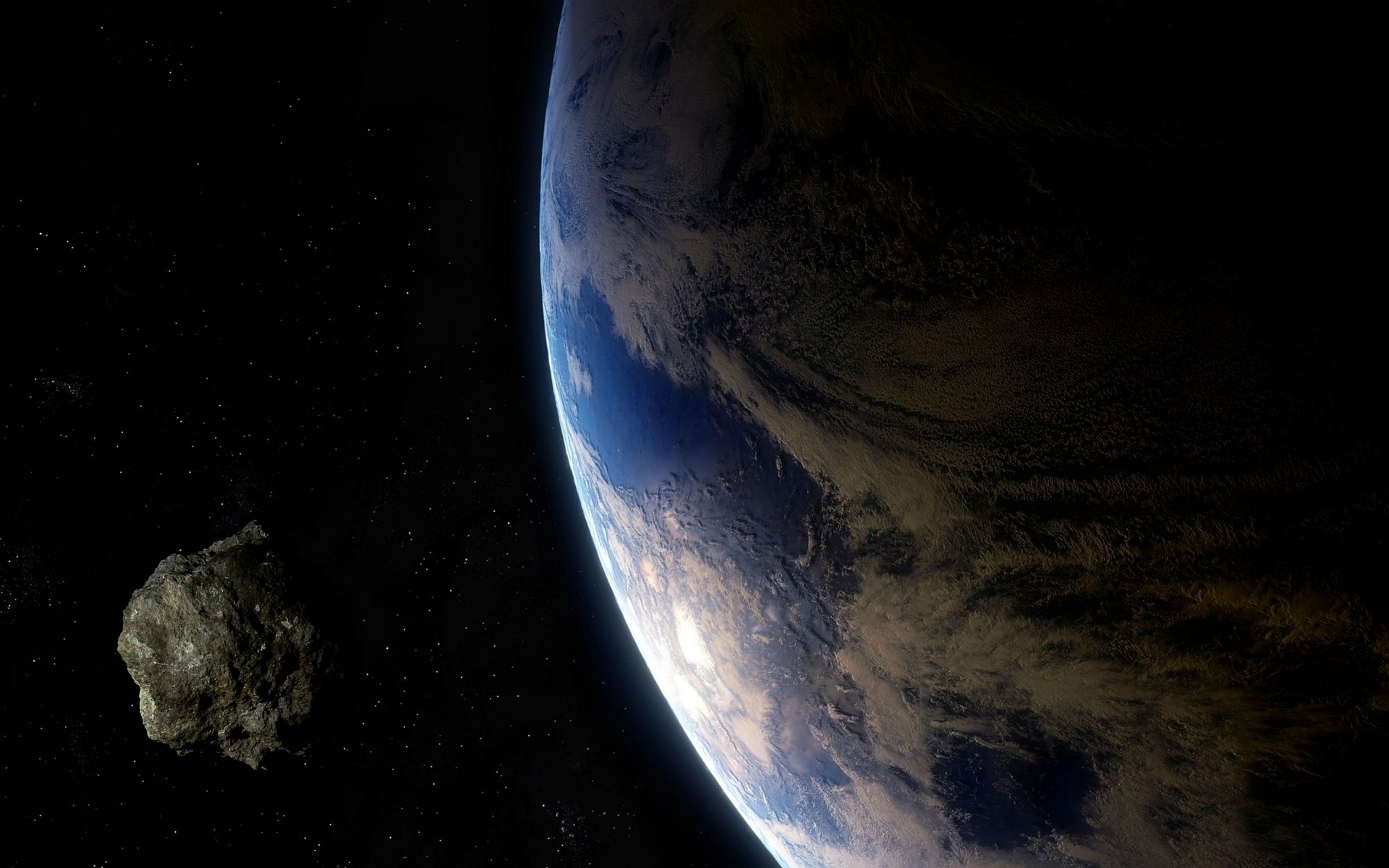In a new paper, Leicester’s Leon Hicks and colleagues used synchrotron X-rays to investigate how space weathering has altered the iron composition of samples from the Itokawa asteroid. This article is reproduced from the Diamond Science Highlights, written by Emma Doughty.
When the solar system formed, lumps of rocks clumped together to form the planets. Asteroids are leftover from that process, and studying them can tell us a lot about how the solar system formed. Some asteroid material falls to Earth as meteorites, but it becomes contaminated by terrestrial material. We can use telescopes to study asteroid spectra, which tells us about their chemical composition. However, the spectra don’t completely match what we expect to see from our study of meteorites. One explanation is that exposure to the space environment changes the surface of the asteroid, a process called space weathering (SW).
In June 2010, Japan’s Hayabusa mission brought the first dust samples from an asteroid back to Earth. In work recently published in Meteoritics & Planetary Science, researchers from the University of Leicester, Kyushu University and Kyoto University used synchrotron X-rays to investigate how space weathering has altered the iron composition of samples from the Itokawa asteroid.

To Itokawa and back
Studying asteroids offers us clues about the early history of the solar system and the origins of life itself. Material from elsewhere arrives on Earth every day in the form of meteorites. Although these offer some hints about the solar system’s formation, they become contaminated by their passage through our atmosphere and when they land. And we can study asteroids with telescopes and uncover information about their composition from spectral analysis. However, what we see in the spectra doesn’t entirely correspond with what we expect from examining similar meteorites.
We could learn a lot more from studying uncontaminated samples, but until recently, it wasn’t possible to visit an asteroid, let alone bring back a piece.
Asteroid Itokawa was first discovered in September 1998 and named after Hideo Itokawa, regarded as the father of Japanese rocketry. Itokawa is a near-Earth object (NEO), meaning that its orbit brings it close to Earth. In 2000, the Japanese space agency (JAXA) selected Itokawa as the target for its Hayabusa mission to collect the first samples from an asteroid and return them to Earth. The Hayabusa spacecraft was launched in May 2003. Despite suffering several setbacks, the mission successfully reached Itokawa and collected samples from the surface.
Hayabusa returned to Earth orbit in June 2010 and released the samples in a re-entry capsule, which researchers recovered. Since then, scientists all over the world have been studying the particles collected.
Dust in the beam
Before the Hayabusa mission, scientists classified Itokawa as an S-type asteroid, meaning that it has a stony mineralogical composition. About 17% of asteroids are S-type, making it the second most common type (carbonaceous C-type asteroids being the most common).
Lead author Dr Leon Hicks, from the University of Leicester, explains:
For this type of asteroid, the spectra we see are darker and redder than we would expect. We think the composition of the surface layers is changed by interaction with the space environment, by radiation and impacting micrometeorites. Using samples from Itokawa to investigating how space weathering changes the surface gives us a clearer picture of asteroids in general. The tiny grains we used in this study were prepared in Japan and set into epoxy resin.
Synchrotron techniques are essential to investigate these tiny samples, and I14, in particular, has a nanoprobe designed for high-resolution work. X-ray absorption spectroscopy (XAS) and X-ray absorption near-edge structure (XANES) cause minimal damage to the sample, which means we can then take it to the electron Physical Science Imaging Centre (ePSIC) for complimentary electron microscopy imaging.
The results of these studies allowed the research team to confirm that the Itokawa samples had been space weathered, with changes in the chemical composition of the surface layers compared to the parent minerals. Iron particles are redistributed, forming crystals within a more amorphous material. The XANES data from I14 showed the iron oxidation state. Samples are normally very ferrous, with the iron present as iron(II) oxide. The Itokawa samples’ space-weathered regions showed an increase in ferric material, with more iron(III) oxide. This could be a result of hydrogen ions bombarding the surface and releasing water vapour.
As the Covid-19 pandemic continues, many scientists are using Diamond remotely, and Dr Hicks is no exception. In a separate experiment investigating meteorite samples loaded on the I18 beamline by Diamond staff, he was able to control the experiment from home.
Space weathering occurs on any surface not protected by an atmosphere, and Dr Hicks has also examined samples from the Moon collected during the Apollo 17 mission. A second Hayabusa mission recently returned samples from asteroid Ryugu, and NASA’s Osiris-Rex spacecraft is on its way home with pieces of asteroid Bennu. And NASA and ESA are collaborating on a mission to bring back samples from Mars that the Perseverance rover will collect. It takes an enormous collaborative effort to collect samples from elsewhere in the solar system, but each tiny grain brings with it a wealth of information on how it all began.
Related publication
Hicks LJ et al. Fe‐redox changes in Itokawa space‐weathered rims. Meteoritics & Planetary Science 55.12 (2020): 2599-2618. DOI:10.1111/maps.13611.

 Subscribe to Physics & Astronomy's posts
Subscribe to Physics & Astronomy's posts
Recent Comments